Volume: 5,85 m3

Lighting: Half-high

Temperature: 14/18ºC

Zonation: (5-25 m) Infralitoral
This plant, Neptune grass (Posidonia oceanica), endemic to the Mediterranean, with tape-like leaves, forms extensive undulating fields that shelter and feed numerous species.
The Neptune grass fields are one of the most characteristics communities of the Mediterranean coastline. They spread on gentle beds, preferably of sand in unexposed coastal segments and at depths of between almost the surface and 35 m. This superior plant (it is not an algae) forms beams of 5-7 tape-like leaves of up to almost a meter in length. It grows with such density and extension that it covers the floor, thus forming fields like any land seed used in monoculture. It is important because it produces a large amount of organic matter (food) and oxygen, (1 m2 leaves provide some 10 l. of oxygen a day). It therefore considerably enriches other ecosystems. It also forms reefs in many bays and beaches that prevent erosion and their disappearance.
This plant serves as a support for other organisms, both algae and animals, especially bryozoans and hydraria that install on its leaves, thus forming the so-called “epiphyte felt”. It also houses a series of fish and invertebrates that feed from its leaves or find sufficient protection to mate and reproduce. Likewise, its sediment enables the development of bivalve mollusks and an infinite number of worms. It is currently in severe regression due to the continuous polluted waste disposal, port constructions, illegal drag fishing, aquiculture, vessel anchoring and the invasion of exotic species.